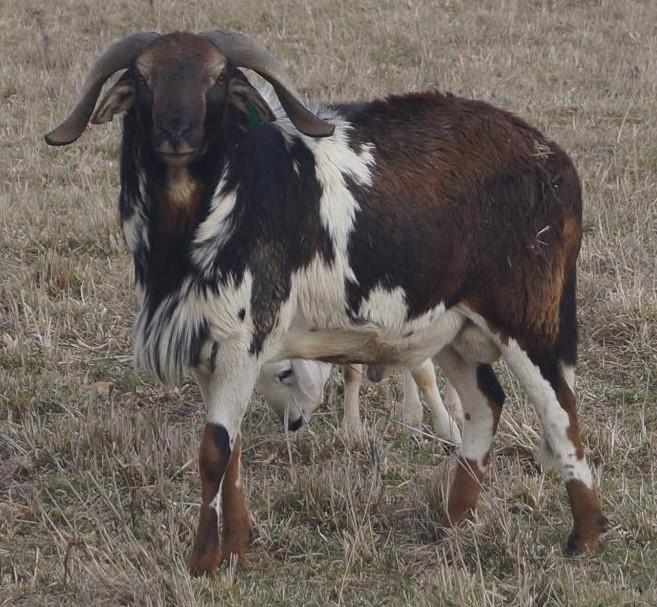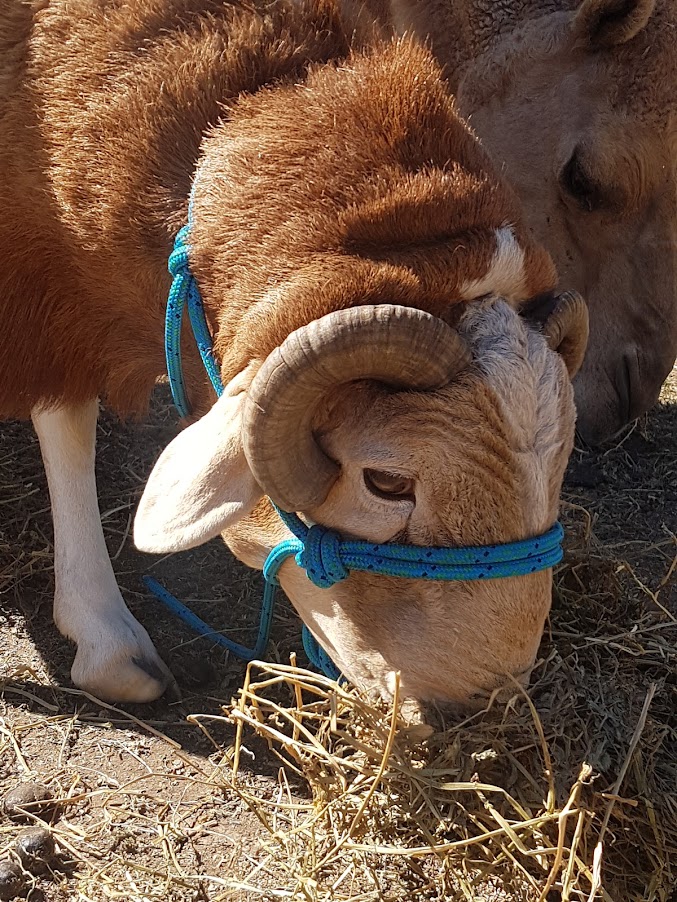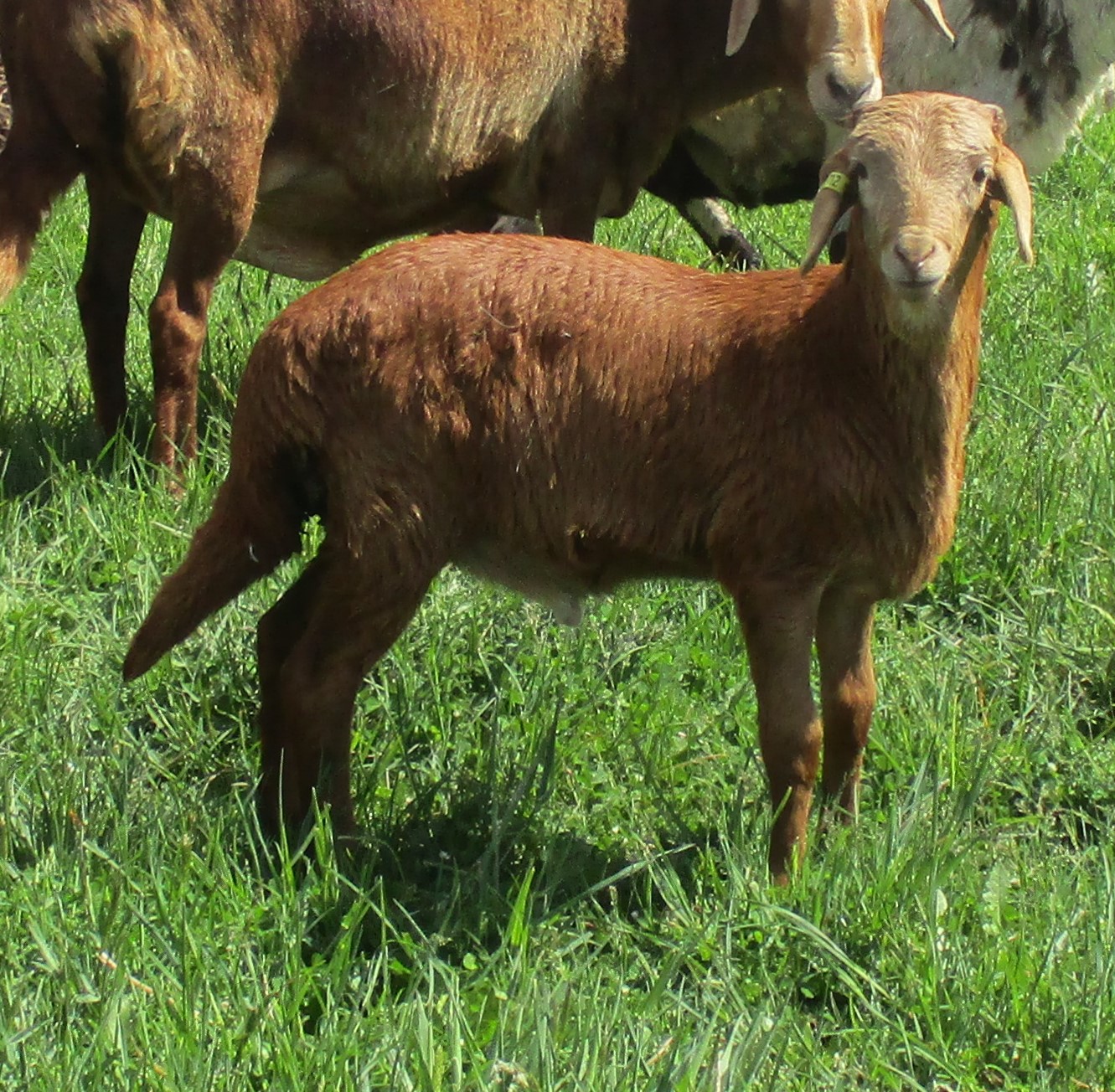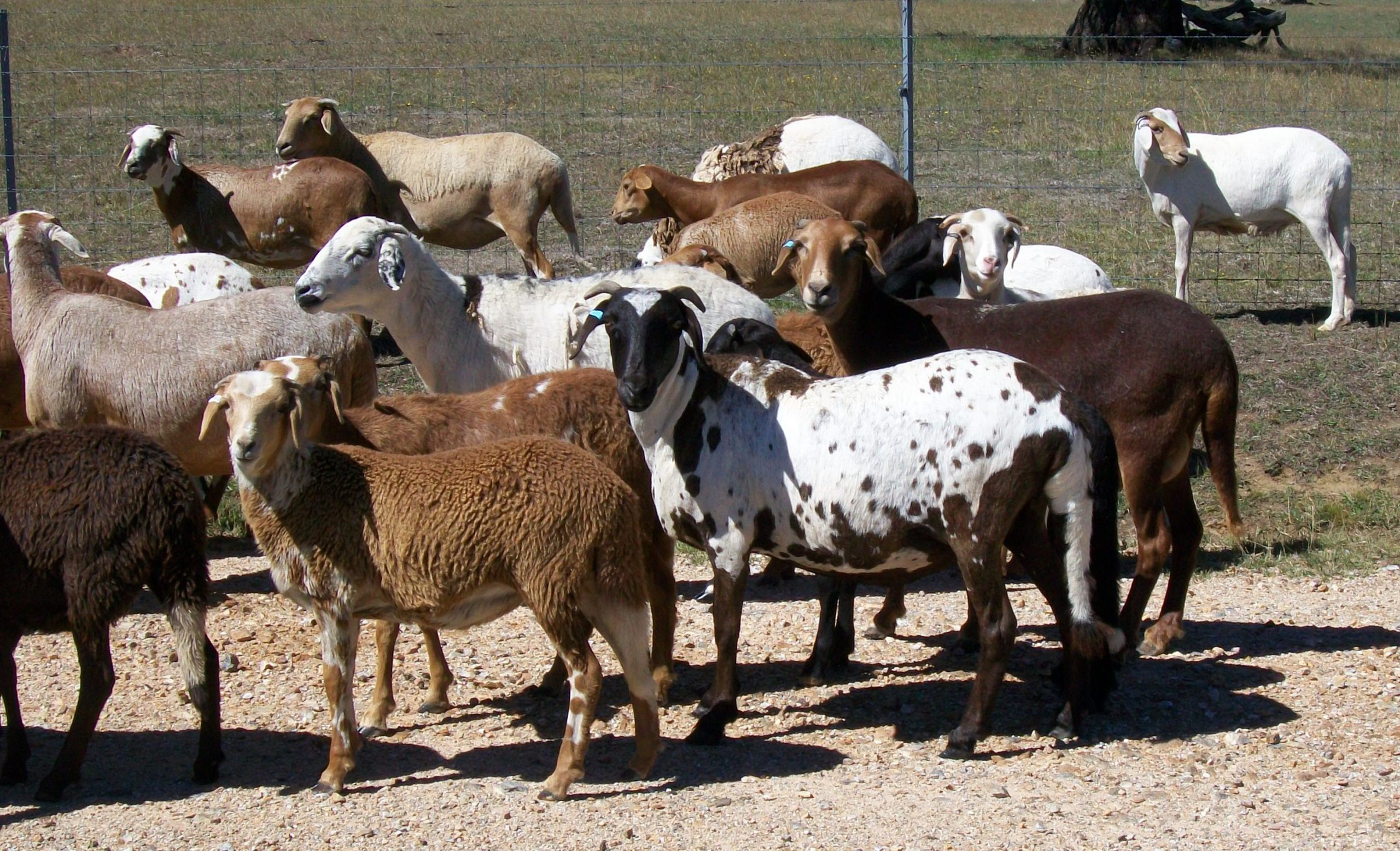Breed Characteristics
Characteristics:
- Typically alert, lively, long-legged, large deep bodies with pronounced brisket.
- Short hair coat that lengthens and fills with wool in the winter in colder areas. This is shed in summer months.
- Lambs have a longer hair coat, often referred to as “Baby Coat”. This “baby coat” retains wool during the first two winters and is shed into the shorter adult coat during their second summer. Young Damara can be mistaken for cross breeds due to this fact.
- Coat texture can vary greatly from coarse to fine and some lambs even have curly hair coat.
- Colours varying from black, brown, white or all combinations of these. Every sheep has a distinct individual hide, no two the same, much like a fingerprint in people
- Wedge shaped tail extends below the hock, stores body fat utilised in hard times, minimal body fat distribution.
- Predominantly horned sheep, though polls do occur mainly in ewes. Rams have large horns, spiral and straight, whilst ewes have smaller horns.
- Mobile ears to repel insects, small lobes (wattles) can occur under throat.
- Rams have strong masculine head with pronounced horns (though Polls do occur), Roman noses, briskets and are livelier and more robust than ewes.
- Ewes have finer bodies and appear more delicate and feminine.
- Proven performers and good food converters. They are non-selective grazers, excellent at weed management by rotational grazing reducing herbicide requirements.
- Highly fertile with polyoestrous cycles, reaching sexual maturity as early as six to seven months, recommended first joining is 10-12 months.
- Capable of producing three lambs in two years. Ewes have a five month gestational period (150 days, slightly longer than other sheep breeds), and lambs start grazing quickly. Ewes have strong mothering instincts, are protective and can cycle again as early as four weeks after lambing. Twins are not uncommon and are reared easily by mothers. A two percent ram-ewe ratio is typical in wheatbelt areas.
- A high proportion of rams, typically three to six percent, are often used in pastoral country.


Damara Cross:
(F1) Damara first cross (50% or 50/50 Damara) has strong hybrid vigour with Damara hide colourings, long nose and fat tail. Requires shearing if a wool breed cross. Usually has a thinner rope like tail compared to higher percentages of Damara blood.
(F2) Damara second cross (75% or ¾ Damara) are more consistently bare-legged, bare-bellied and with less wool but still require some shearing
(F3) Damara third cross ( 87% or 7/8 Damara). Resembles purebred Damara but may not shed as well, have shorter ears and legs.
(F4) Damara fourth cross (93% or 15/16 Damara) resemble purebred Damaras.
( F5) Damara fifth cross (97%) accepted as purebred to all intents.
F1 lambs require shearing at about 12 months and thereafter as necessary, as well as drenching, back-lining and/or crutching. Pure-bred Damaras, F4s and most F3s, do not require shearing and require minimal maintenance apart from an occasional hoof trim.
Grazing Habits:
Browsers of grass, bush and shrubs. They graze over a large area and eat a wide variety of feed including some thistles, saltbush, stubble and poor quality feed. Strong flocking instinct means they often graze and move towards water within sight of each other and rest as a group.


Growth Rates:
Lambs can be weaned from 10 weeks at 13kgs to 17 kgs.
Liveweight of 40 kilograms is usual within seven to nine months, longer than other breeds. This longer target weight growth is made up for by the ability of the Damara to produce many more lambs than any other sheep breeds.
Damara live much longer than other sheep and the Damara ewes have a much longer breeding life. Many ewes still producing good quality lambs at 10 years of age and with a full complement of teeth.
Flocking Instinct:
Strong flocking instincts, making movements in larger numbers of animals around paddocks easier. Damara stay together as group, reducing likelihood to damage fences. Lamb losses are unusual as the whole herd works together as a group to fend off foxes, moving toward a perceived threat as a group rather than away or moving to a corner or fence line of a paddock as a group
to protect all within the group. The many hundreds of years in Africa where
anything that wandered or was separated from the flock was eaten by predators has developed this very strong flocking instinct within the breed.
